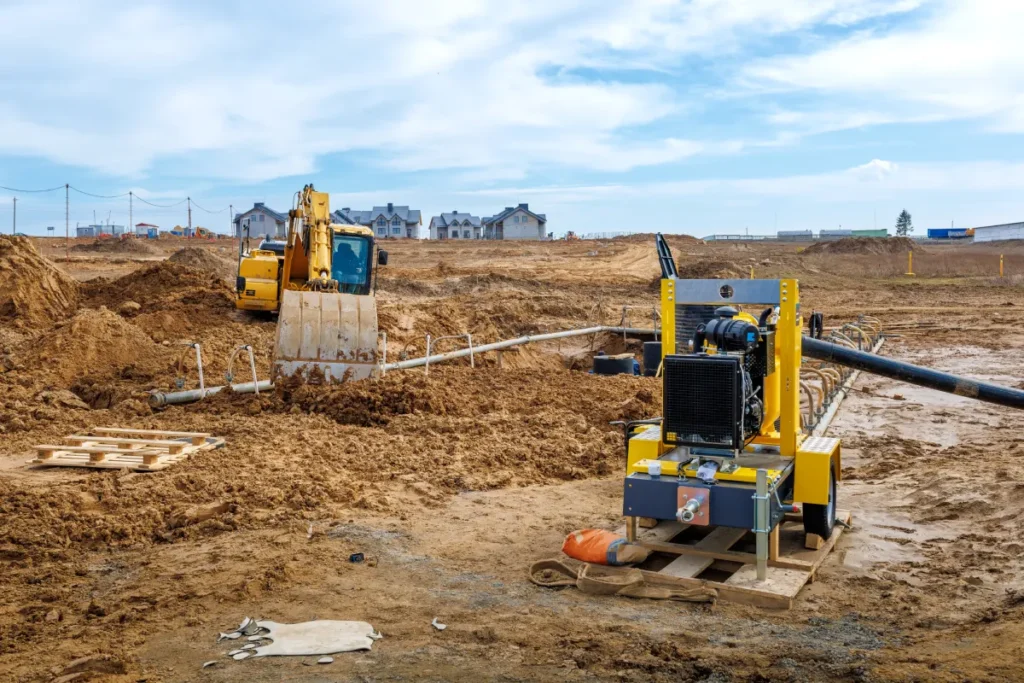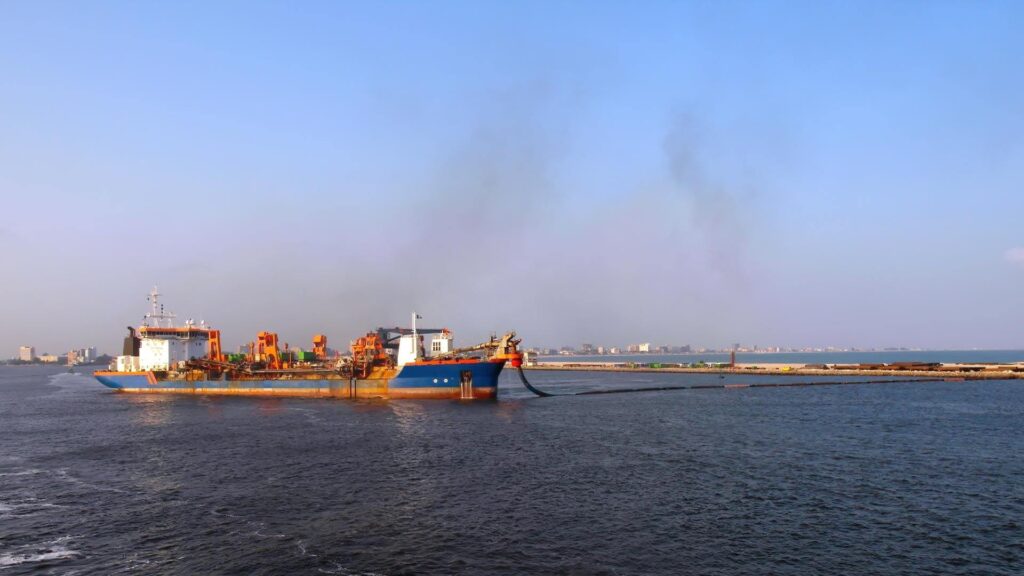Self-priming dewatering pumps have become a game-changer across industries such as mining, oil and gas, construction, and municipal infrastructure, redefining how projects manage water removal and fluid transfer. As operations expand into more remote and challenging environments, the demand for reliable and autonomous dewatering systems has never been higher. These pumps play a critical role in maintaining safe work zones, preventing equipment flooding, and ensuring continuous productivity even under unpredictable site conditions.
The evolution from traditional centrifugal systems to self-priming dewatering pumps represents a significant leap in industrial fluid-handling efficiency. Conventional systems required manual priming and were prone to airlock issues that caused downtime and inefficiency. In contrast, self-priming dewatering pump sets automatically evacuate air and create a vacuum to initiate pumping, reducing operator intervention and accelerating setup times. This innovation not only streamlines daily operations but also enhances safety by minimizing manual handling of hazardous fluids.
As industries face increasing pressure to improve energy efficiency and environmental compliance, the latest self-priming dewatering pump packages deliver measurable benefits. They combine rugged design, rapid re-priming capability, and superior solids-handling performance, essential for high-demand sectors like mining and construction. These systems also offer flexibility across multiple applications, from large-scale dewatering operations to portable site setups.
Mazowe Dredge is at the top of these developments, offering innovative solutions that combine flexible layouts, robust materials, and intelligent control systems. The heavy-duty performance and long-term dependability of their next-generation self-priming dewatering pump sets are intended to meet the operational and environmental objectives of today’s top industrial leaders. Self-priming dewatering pumps are an essential component of modern project execution because Mazowe Dredge enables customers to achieve effective, sustainable dewatering with lower overall lifespan costs by emphasizing innovation and customisation.
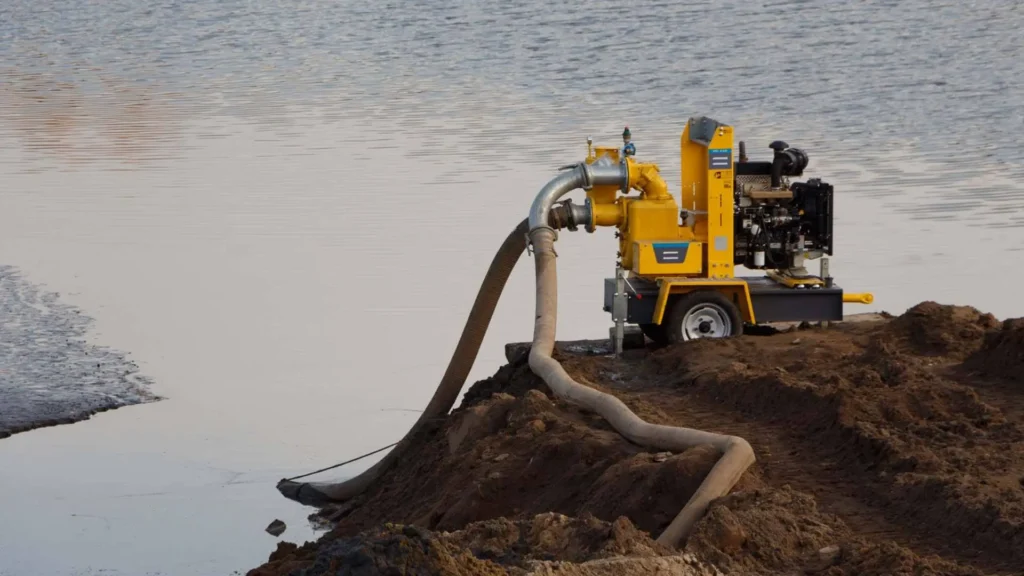
Understanding Self-Priming Dewatering Pump
Fundamentally, a self-priming dewatering pump is designed to start pumping without additional priming aid by automatically removing air from the suction line. Because of its self-sufficient architecture, the system can function well even when the suction line is only half filled with air. This is a crucial benefit in field settings where regular priming is not feasible. After shutting down, the pump retains a small amount of liquid in its casing, enabling it to self-prime upon restart. This ensures continuous running with little oversight.
Unlike standard centrifugal pumps, self-priming dewatering pumps incorporate a built-in air separation and recirculation chamber. This feature enables the pump to handle air-water mixtures effectively, preventing vapor lock and maintaining stable flow. By eliminating the need for external vacuum priming systems, they simplify setup and reduce maintenance overhead. For industries where uptime directly impacts profitability, such as mining, construction, and municipal drainage, these pumps provide an essential operational advantage.
When comparing self-priming dewatering pumps to vacuum-assisted systems, the key difference lies in autonomy and speed of response. Vacuum-assisted units often depend on secondary mechanisms, increasing energy use and mechanical complexity. In contrast, modern self-priming dewatering pump packages integrate advanced impeller geometries and optimized volute chambers to achieve superior suction lift, rapid priming cycles, and consistent discharge flow, all in a compact footprint.
Several types of self-priming dewatering pump sets are used across industrial environments, each engineered for specific fluid characteristics and operational requirements:
- Centrifugal and Trash Pumps: The most common configuration, built for general dewatering and solids-laden water handling. Trash pumps, in particular, are designed to pass larger debris without clogging, making them ideal for mining and construction sites.
- Diaphragm and Positive Displacement Variants: Designed for viscous or abrasive fluids where steady flow and pressure are critical. Their flexible diaphragms or reciprocating pistons ensure efficient movement of challenging slurries.
- Liquid Ring and Rotary Vane Systems: Employed in chemical, marine, and energy sectors for smooth, non-pulsating flow. These self-priming dewatering pump packages excel in applications requiring low noise and continuous operation.
Typical applications extend from mine pit drainage and emergency flood control to process plant maintenance and marine bilge operations. Regardless of the sector, self-priming dewatering pumps deliver a powerful combination of simplicity, resilience, and adaptability, qualities that make them indispensable for modern dewatering challenges.
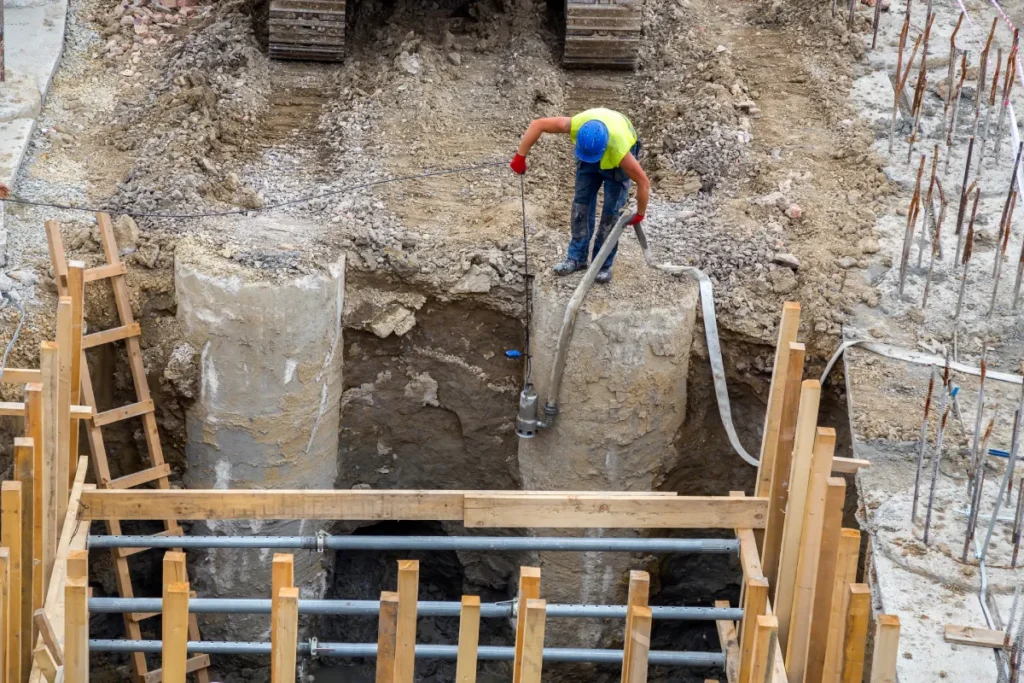
Advantages That Drive Industrial ROI
Modern self-priming dewatering pumps are designed not only to simplify operations but to deliver measurable financial and operational returns. Their engineering innovations directly translate to reduced downtime, lower maintenance costs, and improved project efficiency, key metrics for industries where every hour of operation matters.
Automatic Priming and Fast Startup:
One of the most significant advantages of self-priming dewatering pumps is their ability to automatically evacuate air from the suction line and begin pumping immediately. This eliminates the need for manual priming or external vacuum systems, drastically reducing setup time and labor requirements. For large-scale projects, such as mine pit drainage or municipal stormwater control, this feature enables faster mobilization and increased responsiveness during critical operations.
Operational Reliability:
Engineered for endurance, self-priming dewatering pumps maintain stable performance even when handling air-liquid mixtures, minimizing cavitation and mechanical wear. Their design ensures continuous operation during intermittent flow or suction fluctuations, a common challenge in harsh field conditions. The result is greater reliability and consistent discharge performance across varying applications.
Versatile Fluid Handling:
From clean water to slurry, sediment, or debris-filled fluids, self-priming dewatering pumps are built for versatility. Their impeller and casing configurations are optimized for diverse site conditions, allowing efficient operation even in abrasive or corrosive environments. Whether used in mining tailings ponds or construction dewatering trenches, they maintain suction efficiency and consistent output pressure.
Lower Downtime and Maintenance:
Because of their quick re-priming capability, self-priming dewatering pump packages minimize stoppages during operational interruptions. In environments where pump stoppage can result in flooding or costly project delays, this self-sustaining design translates directly into fewer maintenance interventions and higher uptime. Reduced exposure of internal components to dry-running conditions also extends equipment life.
Ease of Installation and Mobility:
Compact and portable self-priming dewatering pump sets can be deployed in locations where traditional pumps would require complex suction infrastructure. Their above-water installation capability and adaptability to variable suction lifts make them ideal for mobile, remote, or temporary applications. This adaptability ensures that projects can begin quickly and continue uninterrupted regardless of environmental constraints.
Enhanced ROI Across Projects:
When evaluating lifecycle costs, self-priming dewatering pumps consistently outperform conventional systems due to their combination of speed, durability, and reliability. Contractors and industrial operators experience reduced person-hours, lower repair costs, and faster project completion. Over time, these factors accumulate into substantial return on investment, making self-priming dewatering pump packages one of the most cost-effective fluid-handling solutions in the market today.
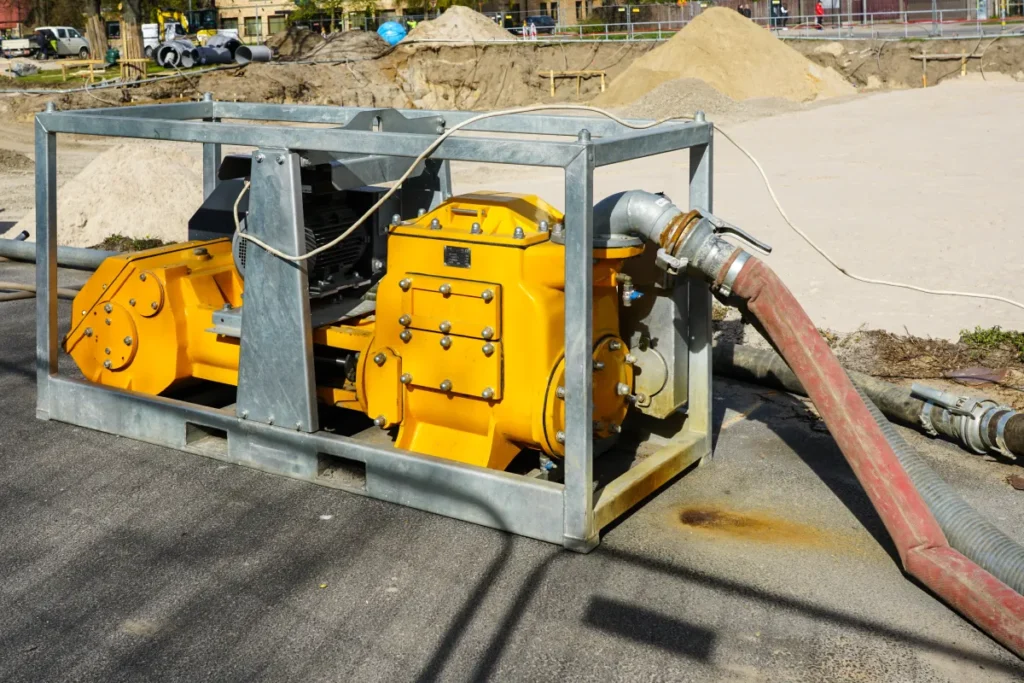
Design Innovations in Modern Self-Priming Dewatering Pumps
The latest generation of self-priming dewatering pumps is the result of continual engineering refinement and technological advancement. Designed to perform under extreme conditions, these systems now combine durability, hydraulic precision, and operational simplicity. The outcome is a new benchmark in dewatering efficiency that meets the evolving needs of modern industry.
Material Advancements for Longevity
The materials utilized to build important wear components are one of the most significant developments of modern dewatering pumps. To increase service life in abrasive or chemically demanding settings, manufacturers have turned to improved elastomers, specialty coatings, and metals that are resistant to corrosion and abrasion. These days, high-chrome iron, duplex stainless steel, or polyurethane coatings that are resistant to erosion and pitting are used in pump casings and impellers. These materials significantly lower lifecycle maintenance costs in both industrial and municipal applications by ensuring dependable performance whether handling slurry, silt, or polluted water.
Enhanced Impeller Geometry for Solids Handling
Another important innovation is an improved impeller design. Modern self-priming dewatering pump packages reduce clogging while allowing the effective circulation of fluids, including particles, through the use of improved flow channels. Advanced computational techniques allow exact modeling of flow dynamics, resulting in impellers that maintain consistent suction and discharge pressure under variable loads. In addition to elevating productivity, this improvement guarantees quieter, more seamless operation, a crucial aspect of operations where uptime and dependability are crucial.
Hydraulic Efficiency Through CFD Engineering
Pump design innovation now relies heavily on computational fluid dynamics, or CFD. Engineers use CFD analysis to improve internal flow routes in a self-priming dewatering pump, which lowers turbulence and hydraulic losses. Optimized head capacity, reduced heat output, and increased energy efficiency are the outcomes. These pumps are ideal for energy-conscious operators managing large-scale dewatering or bypass operations due to their enhanced casing geometries and air-handling chambers, which enable quicker priming and reduced power demand.
Modular Construction for Simplified Maintenance
One significant design benefit of modern self-priming dewatering pump sets is their maintenance flexibility. Quick replacement of parts like wear plates, seals, or impellers is made possible by modular designs, which eliminate the need to disassemble the complete assembly. For contractors operating multiple pumps at various locations, this design streamlines logistics by reducing repair downtime and standardizing parts across different pump types. Lower service costs and increased operating efficiency result immediately from the ability to do on-site maintenance without the need for specialist equipment.
Compact and Engine-Driven Configurations
Modern self-priming dewatering pump packages are now offered in small, skid-mounted, and engine-driven variants to satisfy the increasing need for mobility and quick deployment. These integrated units can be deployed in distant or emergency without external power infrastructure, thanks to their sturdy construction and portability. Field applications, including temporary bypass systems, open-pit mining, and flood response, are perfect for them. These pumps offer a flexible combination of power and mobility, and despite their small size, they function and last just as well as fixed devices.
Through these advancements, self-priming dewatering pumps have evolved into highly efficient, low-maintenance systems that combine mechanical robustness with hydraulic sophistication, setting a new performance standard for industrial dewatering.
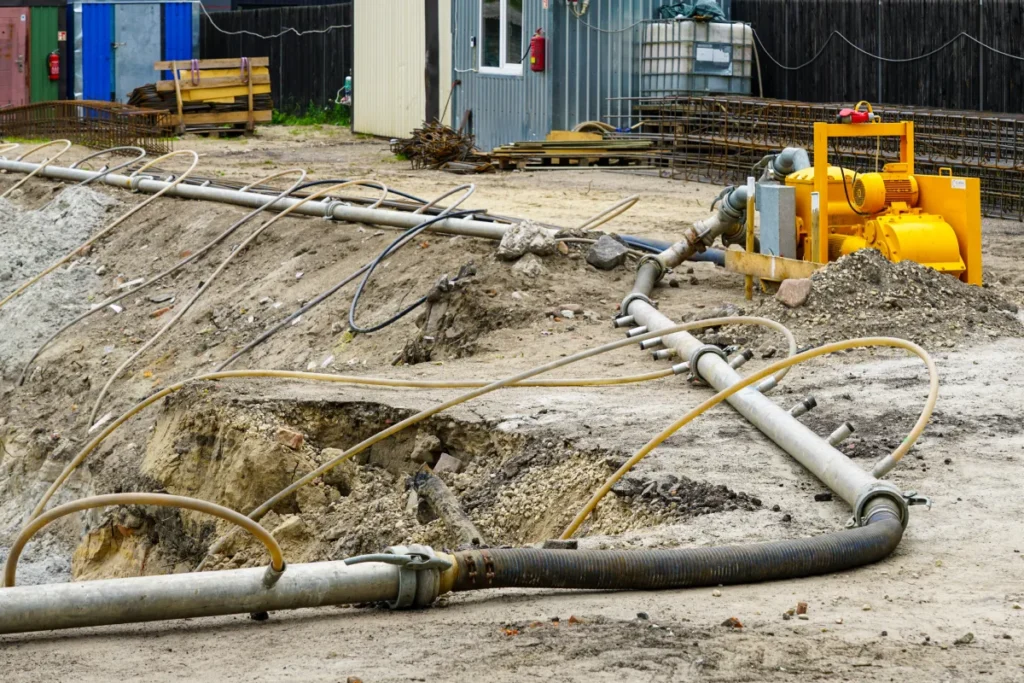
Smart Technologies Transforming Pump Performance
In recent years, self-priming dewatering pumps have undergone a digital transformation, integrating smart technologies that enhance performance, reliability, and predictive control. By merging traditional mechanical design with modern data-driven intelligence, these pumps are revolutionizing fluid management in large-scale industrial and municipal operations.
Sensor-Integrated Pump Packages
Next-generation self-priming dewatering pump packages are equipped with embedded sensors that continuously monitor parameters such as suction pressure, vibration, and temperature. This real-time data enables early detection of irregularities, such as cavitation, seal wear, or bearing misalignment, allowing operators to intervene before failure occurs. The result is reduced downtime, improved safety, and extended equipment lifespan across mining, construction, and municipal applications.
Automated Priming Systems for Unattended Operation
Automation has become an integral feature of advanced self-priming dewatering pumps. Microprocessor-controlled priming systems now regulate air evacuation, impeller speed, and suction performance autonomously. This allows for unattended startups, re-priming after flow interruptions, and consistent efficiency even in fluctuating suction conditions. Automated control reduces human intervention and operational errors, making self-priming dewatering pump sets especially valuable for remote or continuously running installations.
Predictive Maintenance Through IoT Connectivity
The integration of IoT telemetry has transformed maintenance from reactive to predictive. Connected self-priming dewatering pumps transmit performance data to centralized dashboards, where AI-driven algorithms analyze trends to forecast wear patterns and potential failures. This predictive approach allows operators to schedule maintenance proactively, minimizing unexpected outages. For industries where uptime is directly linked to profitability, predictive maintenance represents a major leap forward in operational reliability and cost control.
Remote Diagnostics and Intelligent Control
Modern self-priming dewatering pump sets now support remote diagnostics and control via wireless or satellite connectivity. Operators can adjust speed, monitor flow, and receive alerts in real time from any location. This capability enables centralized oversight of multiple sites, reducing the need for on-site supervision and accelerating decision-making in critical situations. Remote systems also allow quick troubleshooting, significantly lowering maintenance response times in geographically dispersed operations.
Smart Monitoring and ROI Optimization
The connection between intelligent monitoring and tangible cost savings is clear. By using smart sensors and automated data analytics, self-priming dewatering pump packages enable longer service intervals, optimized fuel consumption, and reduced mechanical wear. Over time, these efficiencies compound into substantial operational savings. For procurement heads and project managers, integrating smart technology into self-priming dewatering pumps directly enhances return on investment by improving performance transparency and reliability.
With these innovations, digital intelligence is no longer a luxury; it’s a necessity for maintaining competitiveness and ensuring that self-priming dewatering pumps operate at peak performance across all industrial sectors.
Durability and Sustainability in Harsh Environments
Equipment used in industrial and environmental applications must be able to withstand harsh environments, operate continuously, and remain effective under pressure. These circumstances have led to the development of modern self-priming dewatering pumps, which are designed to provide exceptional durability, little environmental effect, and extended service life in even the harshest conditions.
Engineering for Extreme Duty Cycles
From deep-mine dewatering and large-scale construction to emergency flood response, self-priming dewatering pumps are designed to handle relentless duty cycles without performance degradation. Reinforced pump housings, heavy-duty bearings, and balanced impellers ensure mechanical integrity during long runtime operations. In high-demand industries such as mining and oilfield operations, the strong structure of self-priming dewatering pump sets allows continuous performance despite exposure to abrasive solids and fluctuating suction conditions.
Advanced Wear-Resistant Coatings and Seal Technologies
The durability of self-priming dewatering pump packages has been greatly increased by technological advancements in coatings and sealing systems. Internal surfaces are shielded from abrasion and corrosion by slurry, silt, or chemical-laden fluids by ceramic-coated impellers, hard-faced mechanical seals, and polymer-lined casings. These improvements lower the total cost of ownership for operators overseeing continuous-duty operations by prolonging component lifespan and maintaining hydraulic efficiency throughout extended usage.
Efficient Energy Use and Lower Carbon Impact
Energy efficiency has become a defining factor in modern pumping systems. Advanced hydraulic designs in self-priming dewatering pumps minimize turbulence and friction losses, resulting in optimized flow with lower power consumption. Additionally, improved priming chambers reduce unnecessary air handling cycles, conserving energy during operation. When deployed in engine-driven configurations, these systems often include low-emission diesel engines or hybrid options that meet international environmental standards, making self-priming dewatering pump sets both cost-efficient and environmentally responsible solutions.
Environmental and Safety Compliance
Today’s industrial and government projects must adhere to strict environmental and safety regulations. Manufacturers of self-priming dewatering pump packages have integrated features such as double containment housings, dripless seals, and noise-dampening enclosures to ensure compliance with site-specific standards. By reducing fuel emissions, mitigating fluid leakage, and improving operator safety, these pumps align with global sustainability goals while maintaining operational excellence in the field.
Through thoughtful engineering and eco-conscious design, self-priming dewatering pumps now represent a balance between rugged reliability and sustainable performance, proving that heavy-duty equipment can deliver strength without sacrificing responsibility.
Building the Future of Smart Dewatering
The evolution of self-priming dewatering pumps marks a turning point in how industries approach large-scale water management, slurry transfer, and emergency dewatering. What once required manual oversight and high maintenance has now transformed into a streamlined, data-driven process built on durability, intelligence, and adaptability. These qualities have become the defining benchmarks of modern industrial performance.
By combining rugged mechanical construction with advanced control systems, self-priming dewatering pump packages now deliver operational continuity in environments that were once considered too demanding for conventional equipment. Their ability to self-prime, handle solids, and operate reliably under fluctuating conditions makes them indispensable assets in mining, construction, municipal, and energy operations alike. Moreover, their integration of smart monitoring and predictive maintenance features enables operators to make informed, real-time decisions that improve uptime and reduce lifecycle costs.
Mazowe Dredge continues to set the industry standard in this field, offering fully engineered self-priming dewatering pump packages tailored to the needs of today’s industrial leaders. Each system is designed for maximum efficiency, using premium materials, advanced hydraulics, and intelligent control technologies to ensure consistent, long-term performance. From portable field-ready self-priming dewatering pump sets to large fixed installations, Mazowe Dredge delivers solutions that are both dependable and future-focused.
For organizations seeking a competitive edge in operational efficiency, sustainability, and reliability, partnering with Mazowe Dredge means more than just acquiring a pump; it means investing in a smarter, stronger, and more resilient approach to dewatering. Contact Mazowe Dredge today to explore customized, data-driven self-priming dewatering pumps engineered for the toughest industrial and environmental challenges.

